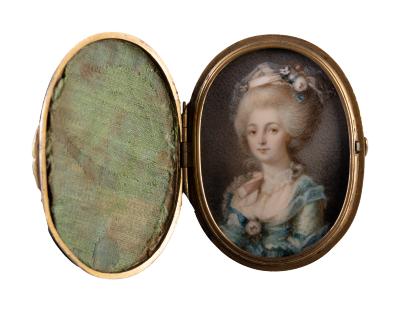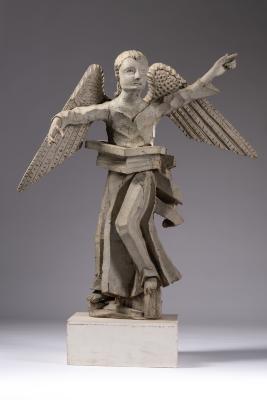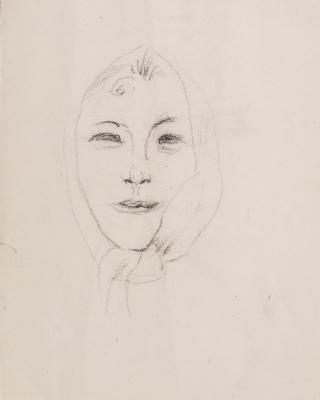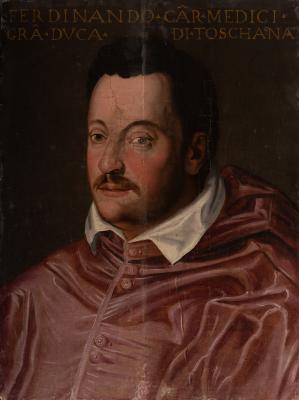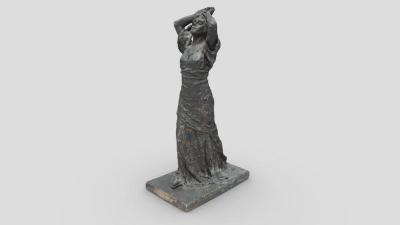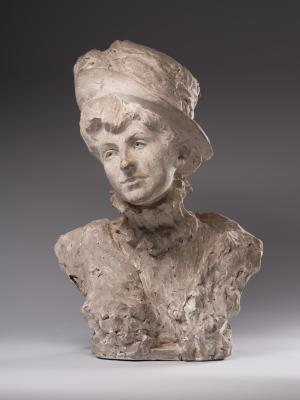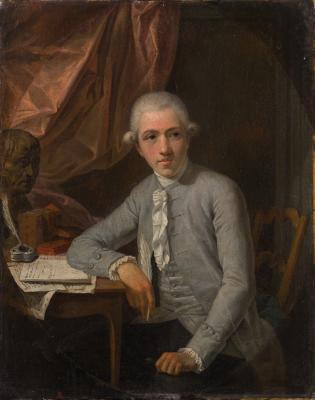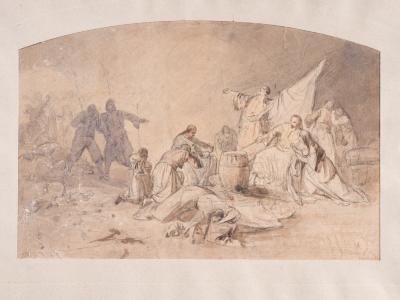There are two versions of this composition by B. Pinelli. They are dated back to 1809 and 1815. In the first version, which the artist performed for the album Raccolta di Cinquanta Costumi Pittoreschi (Collection of Fifty Picturesque Costumes), to the left of the votive aedicula, in front of which the musicians are playing, there is a young woman with a child standing. In the second version, known from the album Nuova Raccolta di Cinquanta Costumi Pittoreschi (New Collection of Fifty Picturesque Costumes), a young woman kneels in prayer in front of the shrine. The Lviv version replicates the second composition with less author attention to the drawing but with an emphasis on bright local colours performed with watercolours. The pipers are dressed in bright clothes, with blue and red capes. On their feet are ciocia sandals and shoes; on their heads are Neapolitan bonnets. One of the musicians is holding a piffero, looking at the image in the aedicule, and the other one is playing the bagpipe-zampogna. The young woman, who is praying, is in mourning, as evidenced by her black headscarf. Piferari (Pepiferari) are shepherds-musicians from the provinces of the Kingdom of Naples, mainly from Campania and Abruzzo, who came to Rome during the Christmas holidays and played music before the images of the Virgin Mary. They played the piffero and the Italian bagpipe (zampogna). They were the integral characters of Roman folk life.











